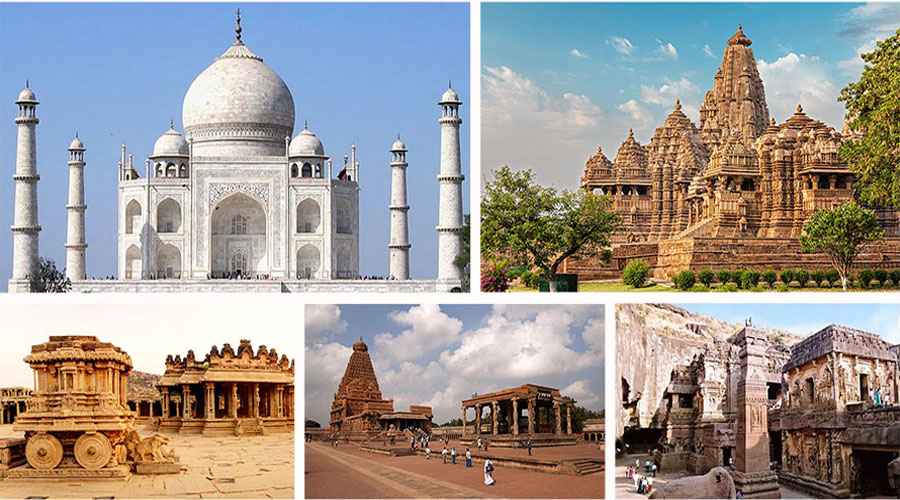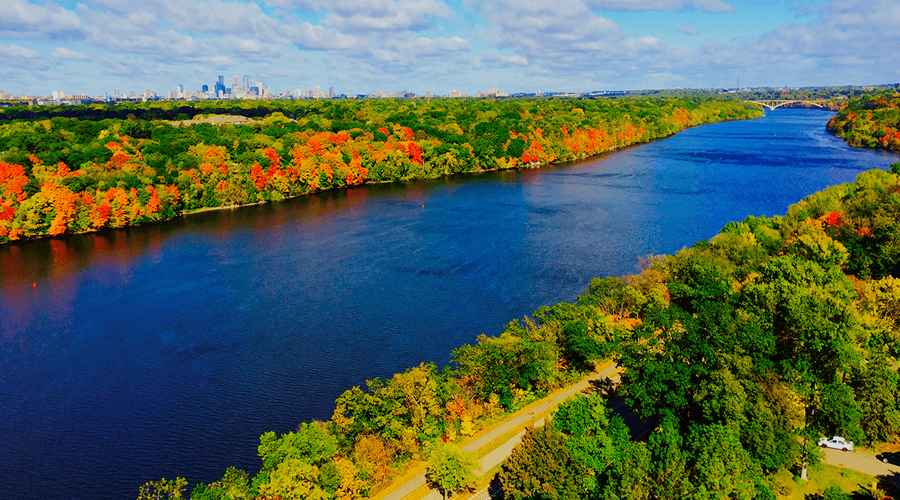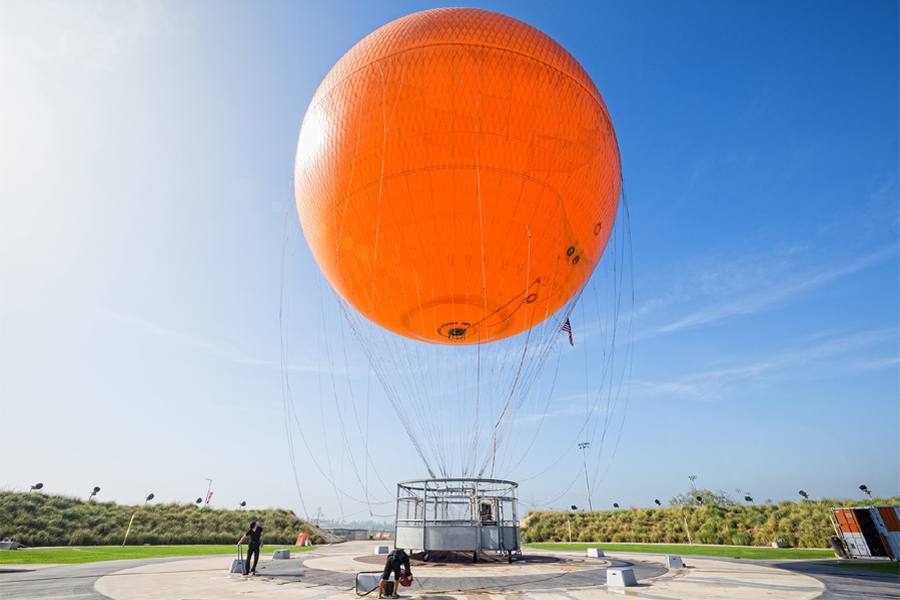India is home to one of the largest and most diverse collections of UNESCO World Heritage Sites in the world. These sites stand as timeless testimonies to the country’s rich cultural heritage, architectural brilliance, and natural wonders. From majestic forts and ancient temples to breathtaking natural landscapes, each site offers a window into the fascinating story of India’s past and present. Here are the top 10 UNESCO World Heritage Sites in India that every traveler and heritage enthusiast should explore.
1. Taj Mahal, Agra
No list of India’s heritage sites can begin without mentioning the Taj Mahal, the most iconic monument of love. Built by Mughal Emperor Shah Jahan in memory of his wife Mumtaz Mahal, this white marble mausoleum stands on the banks of the Yamuna River. Completed in 1653, it is a masterpiece of Mughal architecture blending Persian, Islamic, and Indian styles. The intricate marble inlay work, the perfect symmetry, and the serene gardens make it one of the Seven Wonders of the World. As the first UNESCO World Heritage Site from India (listed in 1983), the Taj Mahal remains a symbol of eternal love and unparalleled beauty.
2. Qutub Minar and Monuments, Delhi
In the heart of Delhi lies Qutub Minar, soaring at 73 meters, making it the tallest brick minaret in the world. Built in 1193 by Qutb-ud-din Aibak to celebrate the beginning of Muslim rule in India, it is surrounded by historically significant monuments, including the Quwwat-ul-Islam Mosque and the Iron Pillar. The minar, adorned with intricate carvings and Arabic inscriptions, showcases the evolution of early Indo-Islamic architecture. This site is a captivating reminder of Delhi’s layered history and its role as a center of power for centuries.
3. Red Fort Complex, Delhi
Another marvel in Delhi, the Red Fort Complex was constructed by Emperor Shah Jahan in the mid-17th century when he shifted his capital from Agra to Delhi. Built from red sandstone, the fort embodies the zenith of Mughal creativity, combining Persian, Timurid, and Indian architectural influences. The fort’s massive gates, ornate halls, and the famous Diwan-i-Khas (Hall of Private Audience) reflect both imperial grandeur and artistic excellence. Every year on Independence Day, the Prime Minister of India unfurls the national flag at this monument, making it a symbol of India’s sovereignty.
4. Ajanta and Ellora Caves, Maharashtra
A journey to Ajanta and Ellora Caves in Maharashtra is like stepping back into India’s ancient artistic past. Carved into solid rock cliffs, these cave complexes date back between the 2nd century BCE and the 10th century CE. The Ajanta Caves are known for their exquisite Buddhist murals, frescoes, and sculptures that depict the life of the Buddha. The Ellora Caves, on the other hand, showcase a blend of Hindu, Buddhist, and Jain temples, reflecting India’s religious harmony. The highlight is the colossal Kailasa Temple at Ellora – a single-rock structure that remains an engineering and artistic marvel even today.
5. Khajuraho Group of Monuments, Madhya Pradesh
The Khajuraho temples are a celebration of art, life, and sensuality. Built by the Chandela dynasty between the 9th and 11th centuries, these temples are famous for their intricate sculptures depicting gods, goddesses, musicians, dancers, and celestial beings. The erotic carvings on some temple walls represent the Tantric traditions of medieval India, symbolizing the unity of the spiritual and physical realms. Out of the original 85 temples, about 25 remain today, standing as magnificent examples of North Indian temple architecture.
6. Sun Temple, Konark
Located on the eastern coast of India in Odisha, the Sun Temple at Konark is designed in the shape of a colossal chariot dedicated to the Sun God, Surya. Built in the 13th century by King Narasimhadeva I of the Eastern Ganga dynasty, the temple is adorned with intricately carved stone wheels, horses, and panels depicting mythological scenes and daily life. Though partially in ruins, its architectural brilliance and symbolic representation of the solar cycle make it one of the most extraordinary temples ever built. It is fittingly known as the “Black Pagoda” by early European sailors who used it as a navigation landmark.
7. Group of Monuments at Hampi, Karnataka
Once the glorious capital of the Vijayanagar Empire, Hampi in Karnataka is now a vast open-air museum of history and architecture. The site covers ruins of palaces, bazaars, temples, and fortifications spread across a surreal landscape dotted with granite boulders. Among the highlights are the Vittala Temple, famous for its stone chariot and musical pillars, and the Virupaksha Temple, which continues to be a place of worship. Hampi’s grandeur reflects the prosperity and cultural sophistication of South India’s last great Hindu kingdom.
8. Group of Monuments at Mahabalipuram, Tamil Nadu
The coastal town of Mahabalipuram showcases the artistic excellence of the Pallava dynasty from the 7th and 8th centuries. The site is famed for its rock-cut cave temples, monolithic rathas (chariots), and sculpted reliefs, including the awe-inspiring “Descent of the Ganges” panel. Overlooking the Bay of Bengal, the iconic Shore Temple is one of the earliest structural temples in South India, illustrating the transition from rock-cut to freestanding Dravidian architecture. Mahabalipuram’s artistic beauty and maritime history make it an essential stop on Tamil Nadu’s heritage trail.
9. Kaziranga National Park, Assam
Moving from cultural marvels to natural wonders, Kaziranga National Park represents India’s astonishing biodiversity. Located in Assam, this World Heritage Site is famed for harboring two-thirds of the world’s population of the Great One-Horned Rhinoceros. Stretching over lush floodplains of the Brahmaputra River, Kaziranga is also home to tigers, wild buffaloes, elephants, and a magnificent variety of birds. The park’s success in wildlife conservation makes it a model for sustainable environmental protection in India.
10. Keoladeo National Park, Rajasthan
Once a royal duck-hunting reserve, Keoladeo National Park (formerly Bharatpur Bird Sanctuary) in Rajasthan has transformed into a sanctuary for migratory birds from across the world. Recognized by UNESCO in 1985, it is one of Asia’s finest birding destinations, hosting over 370 species including the rare Siberian cranes (seen seasonally). Its wetlands, woodlands, and grasslands create a unique ecosystem that supports both resident and migratory species. The park is a paradise for photographers and nature enthusiasts, highlighting India’s commitment to preserving ecological harmony.
Conclusion
India’s UNESCO World Heritage Sites are not merely monuments or natural reserves—they are living stories of artistry, spirituality, and coexistence. Each site reflects a unique facet of India’s civilization, from the grandeur of Mughal architecture and the creativity of ancient artisans to the vibrancy of its natural landscapes. Whether you are drawn by history, religion, art, or wildlife, these ten heritage treasures encapsulate the soul of India. Exploring them is not just a journey through the country but a voyage through time itself.



